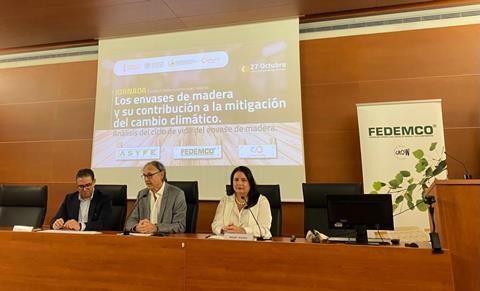Wooden packaging was the best performer in terms of cutting greenhouse gas emissions, pollution, ecotoxicity, and water footprint
A new study from the Polytechnic University of Valencia (UPV) has concluded that wood is the most sustainable packaging option for fruit and vegetables with the lowest environmental impact.

The report, entitled ’The Life Cycle Analysis of Wooden Packaging’, was commissioned by the Association of Sawyers and Manufacturers of Wooden Packaging and its findings were presented at a recent event to discuss how wooden packaging can mitigate the impact of climate change.
It analysed the complete life cycle of a wooden container – from the transformation of the raw material to the management of the waste generated – for the first time and compared it to cardboard packaging.
The report concluded that in the case of fruit and vegetables, wood is the most sustainable packaging option, having a lower environmental impact across all areas, but especially in terms of greenhouse gas emissions, pollution, ecotoxicity and food safety.
Moreover, wooden containers offered the added benefit of having a water footprint of “practically zero” in their manufacture, according to UPV professor José Vicente Oliver. “Wooden containers are also very light and the relationship between very low weight and very good capacity means that in logistics, wood has multiple advantages,” he said.
Other factors highlighted in the report are the contribution of wooden packaging to the cascading use of natural forest resources, its high recycling rate and its recovery.
According to Spanish wooden packaging federation Fedemco, wood represents an example of the bio-circular economy and is one of the pillars of the European Green Deal in its objective to achieve decarbonisation in the packaging and logistics sector.
Fedemoco noted that as a natural and renewable material, wood actively contributes to combating climate change through dynamic carbon capture, namely that it maintains the carbon absorbed by the tree in the past throughout its life cycle.
“One m3 of wood retains around a ton of CO2 and emits 700kg of oxygen,” said Raquel Aguado, director of Fedemco. “In addition, the wooden packaging sector promotes sustainable forest management through the use of forests, which makes it possible to prevent large forest fires, which are one of the main global emitters of CO2. The wooden packaging industry intervenes to reduce the risk.”



